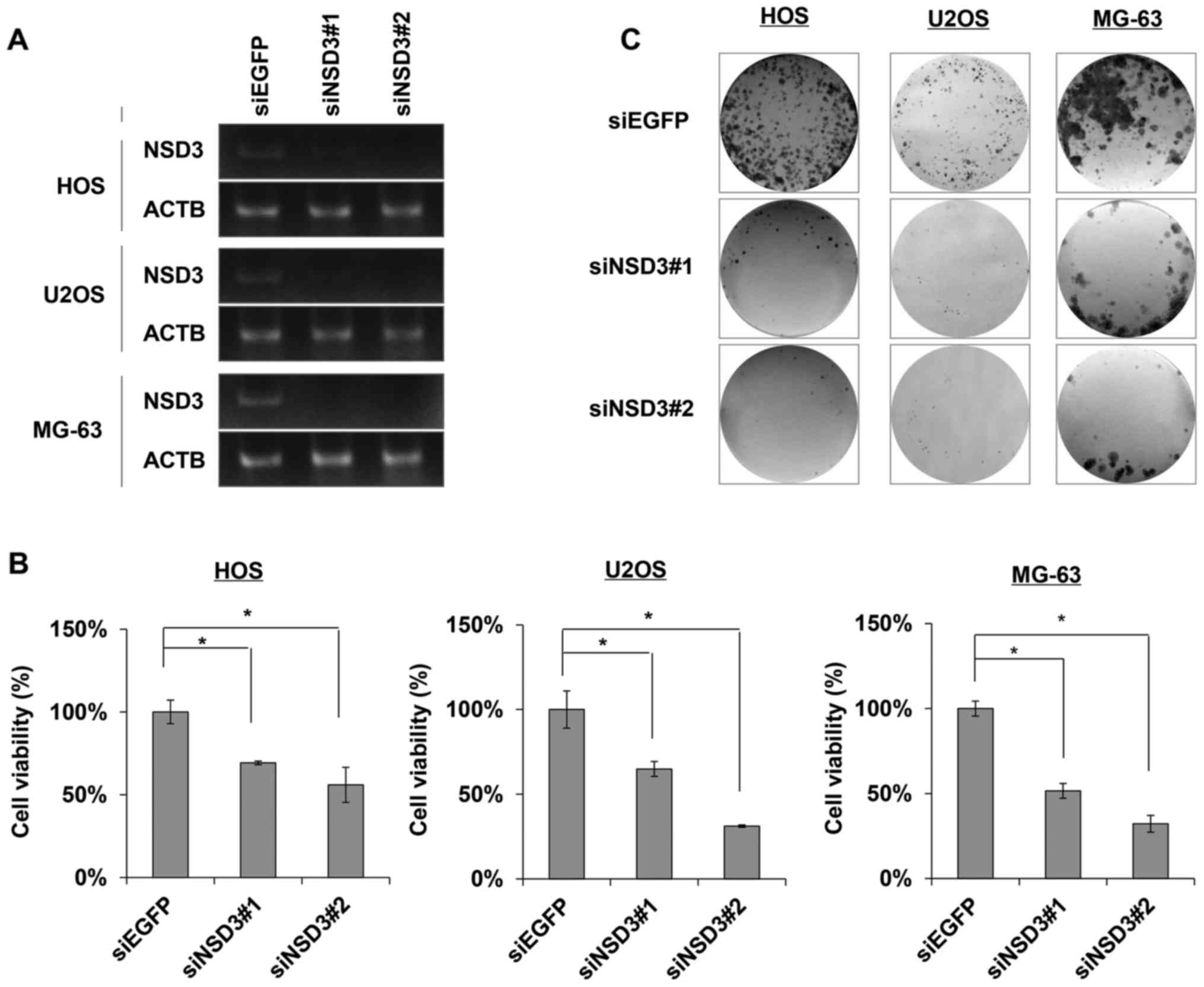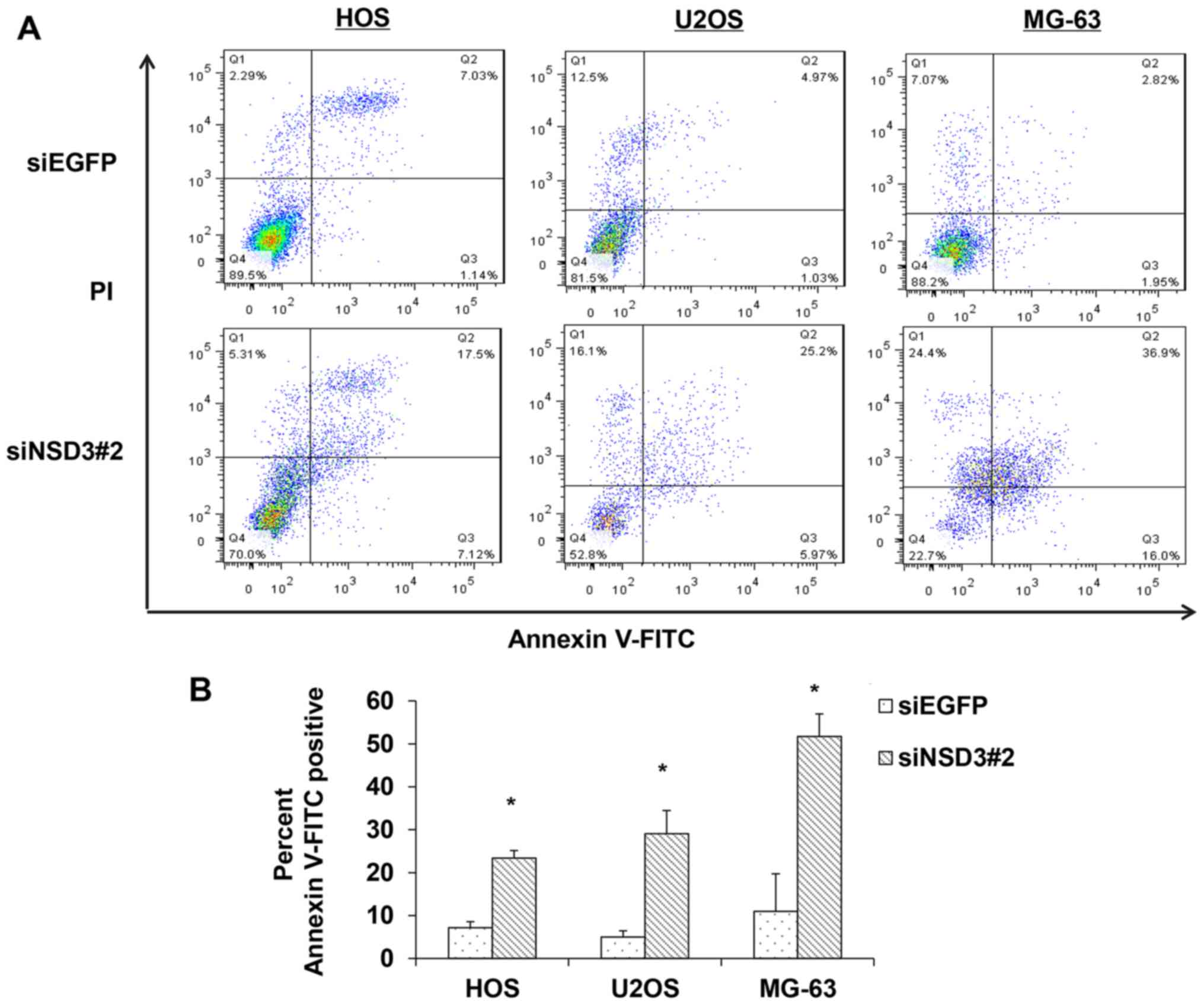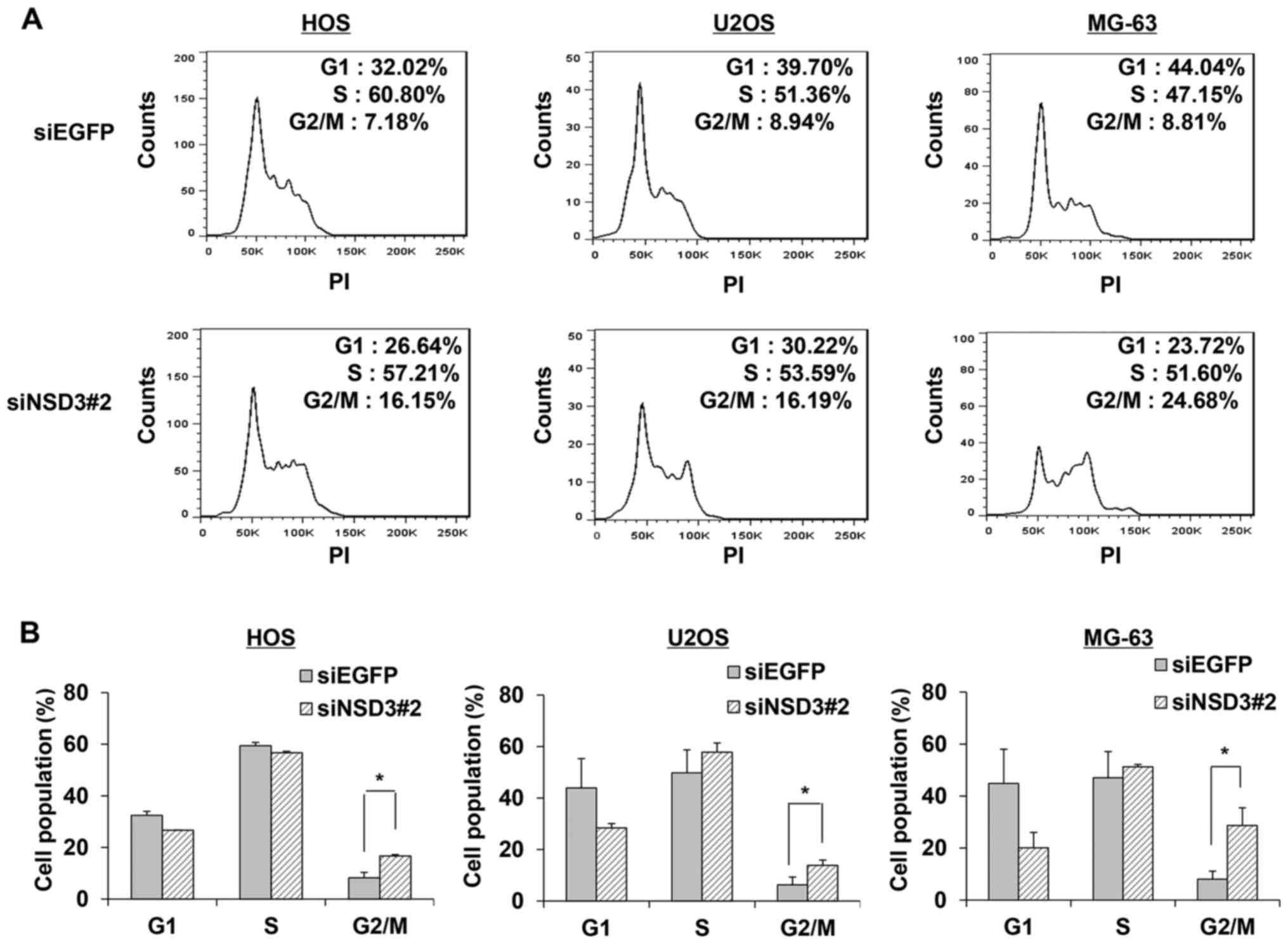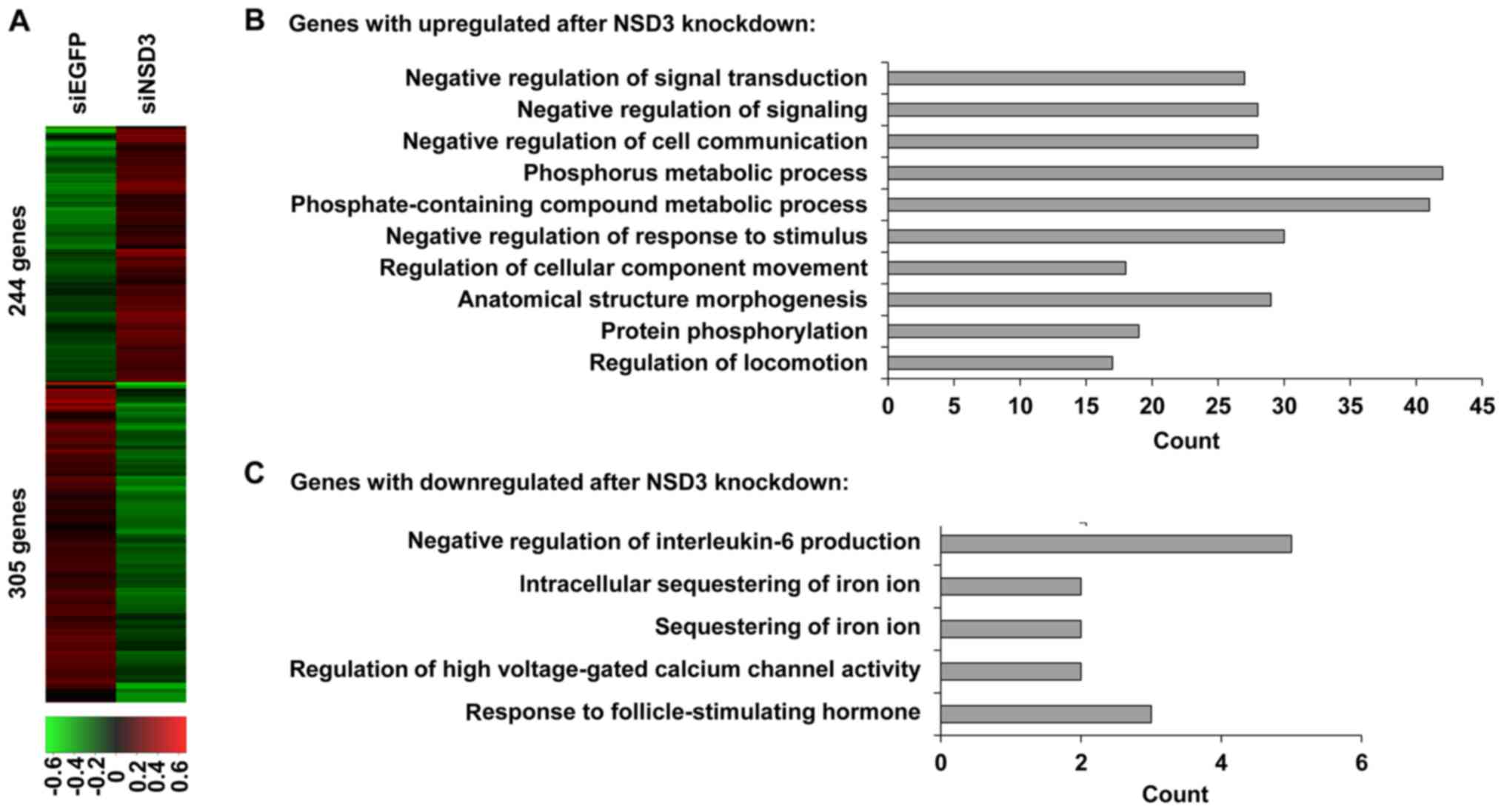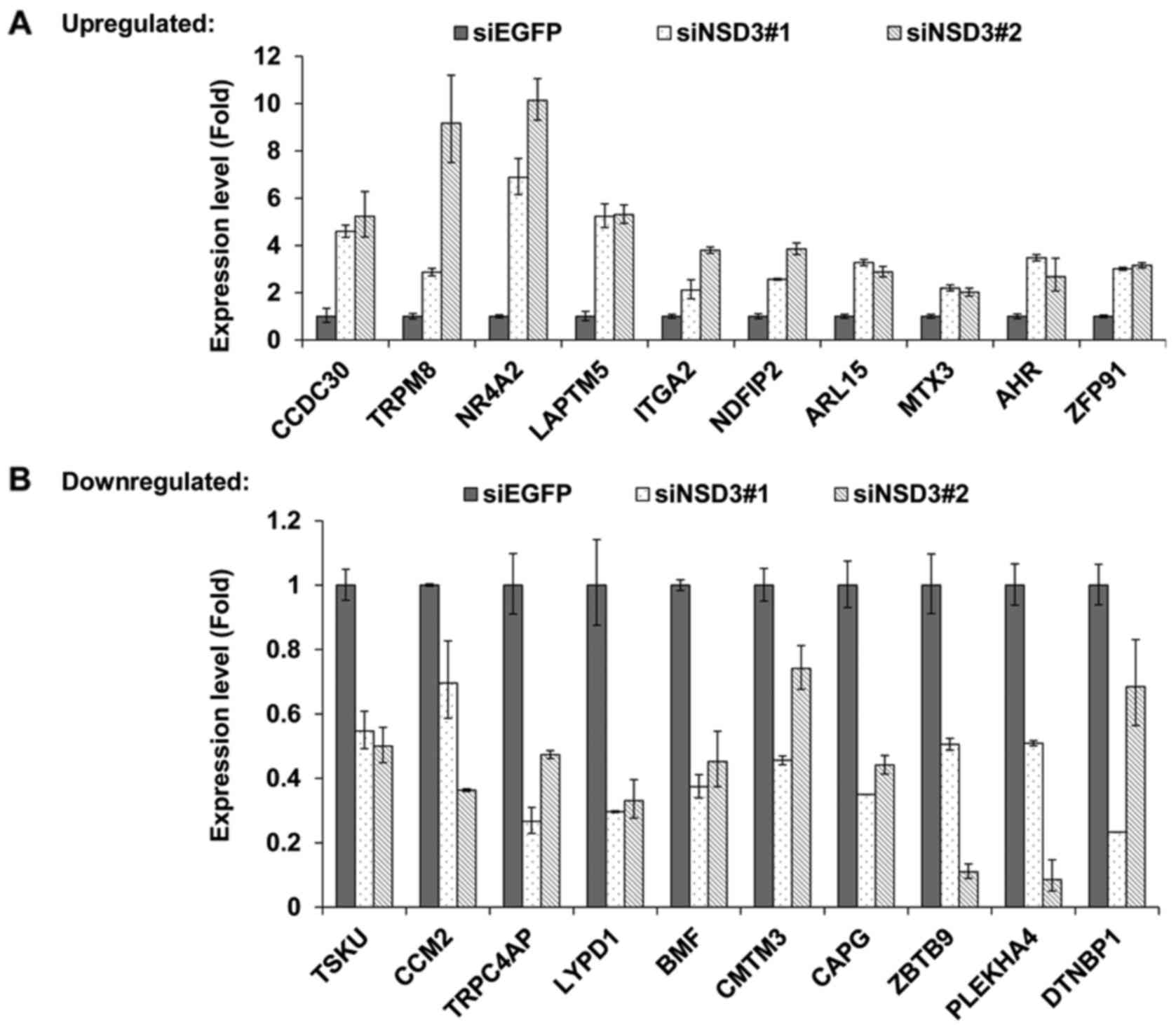|
1
|
Ottaviani G and Jaffe N: The epidemiology
of osteosarcoma. Cancer Treat Res. 152:3–13. 2009. View Article : Google Scholar : PubMed/NCBI
|
|
2
|
Bielack SS, Kempf-Bielack B, Delling G,
Exner GU, Flege S, Helmke K, Kotz R, Salzer-Kuntschik M, Werner M,
Winkelmann W, et al: Prognostic factors in high-grade osteosarcoma
of the extremities or trunk: An analysis of 1,702 patients treated
on neoadjuvant cooperative osteosarcoma study group protocols. J
Clin Oncol. 20:776–790. 2002. View Article : Google Scholar : PubMed/NCBI
|
|
3
|
Botter SM, Neri D and Fuchs B: Recent
advances in osteosarcoma. Curr Opin Pharmacol. 16:15–23. 2014.
View Article : Google Scholar : PubMed/NCBI
|
|
4
|
Gatta G, Botta L, Rossi S, Aareleid T,
Bielska-Lasota M, Clavel J, Dimitrova N, Jakab Z, Kaatsch P, Lacour
B, et al EUROCARE Working Group, : Childhood cancer survival in
Europe 1999–2007: Results of EUROCARE-5 - a population-based study.
Lancet Oncol. 15:35–47. 2014. View Article : Google Scholar : PubMed/NCBI
|
|
5
|
Kempf-Bielack B, Bielack SS, Jürgens H,
Branscheid D, Berdel WE, Exner GU, Göbel U, Helmke K, Jundt G,
Kabisch H, et al: Osteosarcoma relapse after combined modality
therapy: An analysis of unselected patients in the Cooperative
Osteosarcoma Study Group (COSS). J Clin Oncol. 23:559–568. 2005.
View Article : Google Scholar : PubMed/NCBI
|
|
6
|
Chen X, Bahrami A, Pappo A, Easton J,
Dalton J, Hedlund E, Ellison D, Shurtleff S, Wu G, Wei L, et al:
St. Jude Children's Research Hospital-Washington University
Pediatric Cancer Genome Project: Recurrent somatic structural
variations contribute to tumorigenesis in pediatric osteosarcoma.
Cell Reports. 7:104–112. 2014. View Article : Google Scholar : PubMed/NCBI
|
|
7
|
Kuijjer ML, Hogendoorn PC and
Cleton-Jansen AM: Genome-wide analyses on high-grade osteosarcoma:
Making sense of a genomically most unstable tumor. Int J Cancer.
133:2512–2521. 2013.PubMed/NCBI
|
|
8
|
Morishita M, Mevius D and di Luccio E: In
vitro histone lysine methylation by NSD1, NSD2/MMSET/WHSC1 and
NSD3/WHSC1L. BMC Struct Biol. 14:252014. View Article : Google Scholar : PubMed/NCBI
|
|
9
|
He C, Li F, Zhang J, Wu J and Shi Y: The
methyltransferase NSD3 has chromatin-binding motifs, PHD5-C5HCH,
that are distinct from other NSD (nuclear receptor SET domain)
family members in their histone H3 recognition. J Biol Chem.
288:4692–4703. 2013. View Article : Google Scholar : PubMed/NCBI
|
|
10
|
Li Y, Trojer P, Xu CF, Cheung P, Kuo A,
Drury WJ III, Qiao Q, Neubert TA, Xu RM, Gozani O, et al: The
target of the NSD family of histone lysine methyltransferases
depends on the nature of the substrate. J Biol Chem.
284:34283–34295. 2009. View Article : Google Scholar : PubMed/NCBI
|
|
11
|
Rahman S, Sowa ME, Ottinger M, Smith JA,
Shi Y, Harper JW and Howley PM: The Brd4 extraterminal domain
confers transcription activation independent of pTEFb by recruiting
multiple proteins, including NSD3. Mol Cell Biol. 31:2641–2652.
2011. View Article : Google Scholar : PubMed/NCBI
|
|
12
|
Simon R, Richter J, Wagner U, Fijan A,
Bruderer J, Schmid U, Ackermann D, Maurer R, Alund G, Knönagel H,
et al: High-throughput tissue microarray analysis of 3p25 (RAF1)
and 8p12 (FGFR1) copy number alterations in urinary bladder cancer.
Cancer Res. 61:4514–4519. 2001.PubMed/NCBI
|
|
13
|
Balsara BR and Testa JR: Chromosomal
imbalances in human lung cancer. Oncogene. 21:6877–6883. 2002.
View Article : Google Scholar : PubMed/NCBI
|
|
14
|
Ray ME, Yang ZQ, Albertson D, Kleer CG,
Washburn JG, Macoska JA and Ethier SP: Genomic and expression
analysis of the 8p11-12 amplicon in human breast cancer cell lines.
Cancer Res. 64:40–47. 2004. View Article : Google Scholar : PubMed/NCBI
|
|
15
|
Tonon G, Wong KK, Maulik G, Brennan C,
Feng B, Zhang Y, Khatry DB, Protopopov A, You MJ, Aguirre AJ, et
al: High-resolution genomic profiles of human lung cancer. Proc
Natl Acad Sci USA. 102:pp. 9625–9630. 2005; View Article : Google Scholar : PubMed/NCBI
|
|
16
|
Yang ZQ, Liu G, Bollig-Fischer A, Giroux
CN and Ethier SP: Transforming properties of 8p11-12 amplified
genes in human breast cancer. Cancer Res. 70:8487–8497. 2010.
View Article : Google Scholar : PubMed/NCBI
|
|
17
|
Mahmood SF, Gruel N, Nicolle R,
Chapeaublanc E, Delattre O, Radvanyi F and Bernard-Pierrot I:
PPAPDC1B and WHSC1L1 are common drivers of the 8p11-12 amplicon,
not only in breast tumors but also in pancreatic adenocarcinomas
and lung tumors. Am J Pathol. 183:1634–1644. 2013. View Article : Google Scholar : PubMed/NCBI
|
|
18
|
Kang D, Cho HS, Toyokawa G, Kogure M,
Yamane Y, Iwai Y, Hayami S, Tsunoda T, Field HI, Matsuda K, et al:
The histone methyltransferase Wolf-Hirschhorn syndrome candidate
1-like 1 (WHSC1L1) is involved in human carcinogenesis. Genes
Chromosomes Cancer. 52:126–139. 2013. View Article : Google Scholar : PubMed/NCBI
|
|
19
|
Angrand PO, Apiou F, Stewart AF,
Dutrillaux B, Losson R and Chambon P: NSD3, a new SET
domain-containing gene, maps to 8p12 and is amplified in human
breast cancer cell lines. Genomics. 74:79–88. 2001. View Article : Google Scholar : PubMed/NCBI
|
|
20
|
Saloura V, Vougiouklakis T, Zewde M,
Kiyotani K, Park JH, Gao G, Karrison T, Lingen M, Nakamura Y and
Hamamoto R: WHSC1L1 drives cell cycle progression through
transcriptional regulation of CDC6 and CDK2 in squamous cell
carcinoma of the head and neck. Oncotarget. 7:42527–42538. 2016.
View Article : Google Scholar : PubMed/NCBI
|
|
21
|
French CA, Rahman S, Walsh EM, Kühnle S,
Grayson AR, Lemieux ME, Grunfeld N, Rubin BP, Antonescu CR, Zhang
S, et al: NSD3-NUT fusion oncoprotein in NUT midline carcinoma:
Implications for a novel oncogenic mechanism. Cancer Discov.
4:928–941. 2014. View Article : Google Scholar : PubMed/NCBI
|
|
22
|
Shen C, Ipsaro JJ, Shi J, Milazzo JP, Wang
E, Roe JS, Suzuki Y, Pappin DJ, Joshua-Tor L and Vakoc CR:
NSD3-short is an adaptor protein that couples BRD4 to the CHD8
chromatin remodeler. Mol Cell. 60:847–859. 2015. View Article : Google Scholar : PubMed/NCBI
|
|
23
|
Rosati R, La Starza R, Veronese A, Aventin
A, Schwienbacher C, Vallespi T, Negrini M, Martelli MF and Mecucci
C: NUP98 is fused to the NSD3 gene in acute myeloid leukemia
associated with t(8;11)(p11.2;p15). Blood. 99:3857–3860. 2002.
View Article : Google Scholar : PubMed/NCBI
|
|
24
|
Taketani T, Taki T, Nakamura H, Taniwaki
M, Masuda J and Hayashi Y: NUP98-NSD3 fusion gene in
radiation-associated myelodysplastic syndrome with t(8;11)(p11;p15)
and expression pattern of NSD family genes. Cancer Genet Cytogenet.
190:108–112. 2009. View Article : Google Scholar : PubMed/NCBI
|
|
25
|
Jacques-Fricke BT and Gammill LS: Neural
crest specification and migration independently require
NSD3-related lysine methyltransferase activity. Mol Biol Cell.
25:4174–4186. 2014. View Article : Google Scholar : PubMed/NCBI
|
|
26
|
Trapnell C, Roberts A, Goff L, Pertea G,
Kim D, Kelley DR, Pimentel H, Salzberg SL, Rinn JL and Pachter L:
Differential gene and transcript expression analysis of RNA-seq
experiments with TopHat and Cufflinks. Nat Protoc. 7:562–578. 2012.
View Article : Google Scholar : PubMed/NCBI
|
|
27
|
Knutson SK, Warholic NM, Wigle TJ, Klaus
CR, Allain CJ, Raimondi A, Scott M Porter, Chesworth R, Moyer MP,
Copeland RA, et al: Durable tumor regression in genetically altered
malignant rhabdoid tumors by inhibition of methyltransferase EZH2.
Proc Natl Acad Sci USA. 110:pp. 7922–7927. 2013; View Article : Google Scholar : PubMed/NCBI
|
|
28
|
Knutson SK, Kawano S, Minoshima Y,
Warholic NM, Huang KC, Xiao Y, Kadowaki T, Uesugi M, Kuznetsov G,
Kumar N, et al: Selective inhibition of EZH2 by EPZ-6438 leads to
potent antitumor activity in EZH2-mutant non-Hodgkin lymphoma. Mol
Cancer Ther. 13:842–854. 2014. View Article : Google Scholar : PubMed/NCBI
|
|
29
|
Basavapathruni A, Olhava EJ, Daigle SR,
Therkelsen CA, Jin L, Boriack-Sjodin PA, Allain CJ, Klaus CR,
Raimondi A, Scott MP, et al: Nonclinical pharmacokinetics and
metabolism of EPZ-5676, a novel DOT1L histone methyltransferase
inhibitor. Biopharm Drug Dispos. 35:237–252. 2014. View Article : Google Scholar : PubMed/NCBI
|
|
30
|
Klaus CR, Iwanowicz D, Johnston D,
Campbell CA, Smith JJ, Moyer MP, Copeland RA, Olhava EJ, Scott MP,
Pollock RM, et al: DOT1L inhibitor EPZ-5676 displays synergistic
antiproliferative activity in combination with standard of care
drugs and hypomethylating agents in MLL-rearranged leukemia cells.
J Pharmacol Exp Ther. 350:646–656. 2014. View Article : Google Scholar : PubMed/NCBI
|
|
31
|
Waters NJ, Smith SA, Olhava EJ, Duncan KW,
Burton RD, O'Neill J, Rodrigue ME, Pollock RM, Moyer MP and
Chesworth R: Metabolism and disposition of the DOT1L inhibitor,
pinometostat (EPZ-5676), in rat, dog and human. Cancer Chemother
Pharmacol. 77:43–62. 2016. View Article : Google Scholar : PubMed/NCBI
|
|
32
|
Mohammad HP, Smitheman KN, Kamat CD, Soong
D, Federowicz KE, Van Aller GS, Schneck JL, Carson JD, Liu Y,
Butticello M, et al: A DNA hypomethylation signature predicts
antitumor activity of LSD1 inhibitors in SCLC. Cancer Cell.
28:57–69. 2015. View Article : Google Scholar : PubMed/NCBI
|















